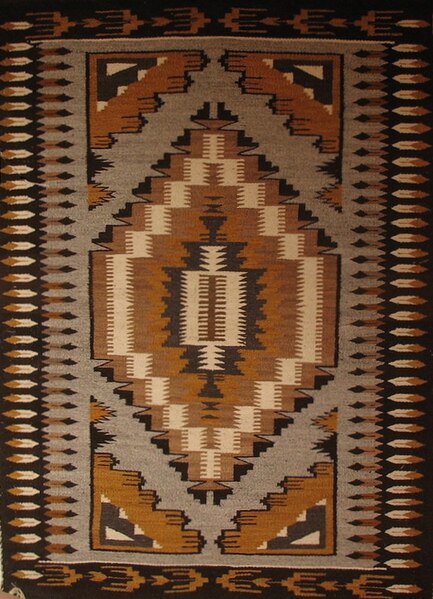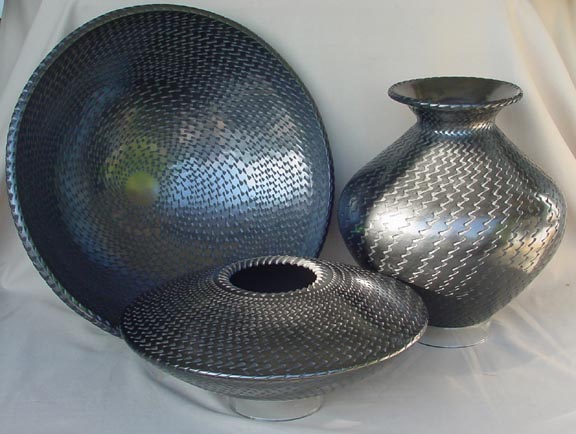Haitian paintings are known from the 19th century, and British and French artists taught Haitian pupils in Haiti in that century. However
The arrival of an American named Dewitt Peters in 1943 marked the beginning of a true revolution of Haitian arts. Dewitt, a watercolorist on a wartime assignment, wanted to open a centre to oversee the genuine development of the Haitian artists. He observed that the country did not have any visible painting activity nor any art gallery. This was contrary to the great physical beauty of the country and with a people so gifted with "pictorial language of color and form." Dewitt embarked on a mission that would modernize Haitian arts and introduced it to the world. On May 14, 1944, the Centre d'Art was inaugurated in Port-au-Prince. The founders of the centre were Dewitt Peters, Maurice Borno, Albert Mangones, Raymond Coupeau, Geo Remponeau, Gerald Bloncourt, Raymond Mavelanette and Philippe Thoby-Marcelin.
In the modernization process, talented but previously unknown atrists such as Hector Hyppolite, Philome Obin, Rigaud Benoit, and Castera Bezile stepped forward to work with Dewitt. Hyppolite a "hougan", a priest in the the voodoo religion, who wanted to start a new career was painting flowers with a brush of chicken feathers on doors in his local community of Saint-Marc and Mont Rouis. Hyppolite is better remembered as the father of the Southern school of Haitian art. Obin, who painted Les Bourgeois du Cap-Haitien vers 1900-1919, shown here, was a self-taught master of architectural geometry and documented historicism. He was already known for painting religious illustrations and scenes of the United States Marine occupation, in which Obin depicted a violent struggle between the American forces and the Haitian peasants in Northern Haiti. Obin went on to found the Northern School of Painting, known for orderly composition and narrative works. Benoit was more interested in illustrating his "barbed vignettes of Haitian life", and Bezile, was concentrating on bringing forth the miseries and the glories of the peasant existence.
According to Wikipedia
(M)any Pueblo sought refuge with their Navajo neighbors in the late 17th century to evade the conquistadors in the aftermath of the Pueblo Revolt. This social interchange is the probable origin of the distinctive Navajo weaving tradition. Spanish records show that Navajo people began to herd sheep and weave wool blankets from that time onward.The Navajo greatly increased production of blankets and rugs in the late 19th century, selling many products into the market created by the railroads when they came through territory accessible to the Navajo.
Several European-American merchants influenced Navajo weaving during the next decades. The first to advertise Navajo textiles in a catalog was C. N. Cotton in 1894. Cotton encouraged professional production and marketing among his peers and the weavers whose work they handled. Another trader named John. B. Moore, who settled in the Chuska Mountains in 1897 attempted to improve the quality of textiles he traded. He attempted to regulate the cleaning and dyeing process of artisans who did business with him, and shipped wool intended for higher grade weaving outside the region for factory cleaning. He limited the range of dyes in textiles he traded and refused to deal fabric that had included certain commercially produced yarns. Moore's catalogs identified individual textile pieces rather than illustrating representative styles. He appears to have been instrumental in introducing new motifs to Navajo weaving.
Taxco, located about 100 miles from Mexico City, is one of the oldest mining sites in the Americas.Cortes staked his mining claim in Taxco in 1522
By the end of the century, silver from Taxco had spread across Europe, and remote Taxco was reknowed for its wealth of silver. It had become Spain's primary source in the New World of precious metals and had become a busy mining area. .......
William Spratling, a U.S. citizen and associate architecture professor from Tulane University arrived in Taxco to study Mexico and its culture. In1929 he moved to Mexico and was welcomed into the influential artistic circles of Mexico. In 1931 U.S. Ambassor Dwight Morrow commented to Mr. Spratling that Taxco had been the site of silver mines for centuries, but unfortunately had never been considered a location where jewelry and objects of silver were designed and made. This seemingly insignificant comment changed the course of Taxco's artistic and economic history.
Mr. Spratling discovered the potential talent in the locals and motivated the community artisans to create designs and rediscover the craft of silversmithing. With his own designs he created an apprentice system of training young silversmiths with artistic talent and gave them the opportunity to develope their skill. He brought in from Iguala a highly regarded goldsmith to teach the art of working precious metal.
Pueblo Indians had been making pottery for more than 1000 years, but in the 19th century most of the pottery that was made in the pueblos was utilitarian. Again, when railroads made wider markets available to the potters, they began to produce "tourist" wares. According to one source:
Prior to 1950, few Native American potters signed their work. In their own communities, the forms and designs of their pieces identified the work of the master potters easily. Regionally traders, collectors, and museums also appreciated these pieces. In the twentieth century benefactors from all of these categories began an earnest campaign to make the important artistry and beauty of these vessels and their makers known to the world. Contests that judged exceptional artistry such as the Gallup Intertribal Indian Ceremonial and the Santa Fe Indian Market began to have an impact. The early success and recognition of Pueblo pottery artist Maria Martinez at the St. Louis, San Diego, & Chicago World Fairs helped to pave the way for other exceptional Native American potters. In the latter half of the 20th century the art and names of Pueblo pottery artists like Maria Martinez, Lucy Lewis, Christina Naranjo, Fannie Nampeyo, and Margaret Tafoya were known worldwide. Exhibitions like the Seven Families in Pueblo Pottery, permanent recognition in important museums around the world, and the marketing techniques of the traders and other Native American arts dealers further cemented in art history these names and the names of many, many other fine and deserving potters, both historic and contemporary.UNESCO approved of the Convention on the Protection and Promotion of the Diversity of Cultural Expressions in 2005. More than 125 countries have signed up to honor its terms (not including the United States). I fear that, contrary to the wording of the Convention, some of these governments will use it to bar foreign influences on their national cultural products. The examples above suggest that the better plan is to allow the artists and artisans to absorb and adapt foreign influences to their own culture, thereby enriching it.




No comments:
Post a Comment